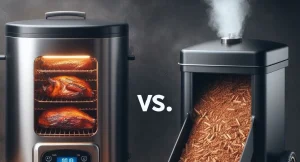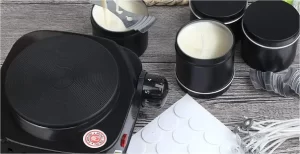Why Instant Pots Aren’t Approved for Pressure Canning?
The Instant Pot is not approved for pressure canning because it does not meet the strict safety standards required for preserving low-acid foods. While some models reach the necessary pressure, they lack consistent temperature control and testing to ensure safe processing times.
Pressure canning requires precise conditions to destroy harmful bacteria like botulism. Tested pressure canners maintain steady pressure and temperature throughout the process, something the Instant Pot cannot guarantee. The USDA and extension services only recommend using properly evaluated pressure canners, not multi-cookers like the Instant Pot.
Some people attempt canning in the Instant Pot, but this carries serious risks. The pot’s smaller size and uneven heat distribution may lead to underprocessing, which can cause spoilage or foodborne illness. Even if jars seal, that doesn’t mean the food is safe.
For safe home canning, stick to USDA-approved pressure canners with clear guidelines for processing times and pressures. If you want to use your Instant Pot for food preservation, focus on tasks like making jams or pickles, which use high-acid ingredients and water bath canning methods. Always prioritize safety over convenience when preserving food.
The Instant Pot excels at cooking, but pressure canning is a specialized process requiring dedicated equipment. Investing in a proper pressure canner ensures your home-canned foods are both delicious and safe to eat.
Why Instant Pots Aren’t Approved for Pressure Canning
Instant Pots lack the necessary certifications for safe pressure canning. The USDA and National Center for Home Food Preservation mandate strict standards for canning equipment. Approved pressure canners undergo rigorous testing to ensure consistent heat distribution and pressure control. Instant Pots, designed as multi-cookers, do not meet these benchmarks.
Temperature fluctuations pose a serious risk. Pressure canning requires maintaining a precise 240°F (116°C) to destroy botulism spores. Instant Pots may not sustain this temperature uniformly, leading to underprocessed food. Even slight variations can compromise safety.
Jar capacity and venting differ significantly. Pressure canners accommodate multiple jars with proper steam flow. Instant Pots have limited space and may not vent adequately, increasing the risk of improper sealing or bacterial survival.

How Instant Pots Differ from USDA-Approved Pressure Canners
Pressure regulation is a key distinction. USDA-approved canners maintain a steady 10-15 PSI, critical for low-acid foods. Instant Pots often peak at lower pressures and lack external pressure gauges for verification.
Heat distribution is uneven in multi-cookers. Traditional canners use heavy-duty materials to ensure even heat penetration. Instant Pots, with thinner construction, may create hot spots, leaving some jars underprocessed.
Processing times are not interchangeable. Recipes for pressure canners account for heat-up and cool-down phases. Instant Pots have shorter cycles, making tested processing times unreliable for safe preservation.
- Read More: Steam Oven Pros & Cons – Should You Get One?
What Experts Say About Instant Pot Canning Safety
Extension services strongly discourage the practice. Universities like Oregon State and Penn State explicitly warn against using Instant Pots for canning. No research supports its safety for low-acid foods like vegetables or meats.
Botulism risk outweighs convenience. Experts emphasize that sealed jars don’t guarantee safety. Without sustained high pressure, toxins can thrive, leading to life-threatening illness.
Manufacturers also advise against it. Instant Pot’s parent company, Instant Brands, states their devices are not designed for canning. Ignoring these warnings voids warranties and risks health.
Safe Alternatives to Pressure Canning in an Instant Pot
Water bath canning works for high-acid foods. Fruits, jams, and pickles can be safely processed in boiling water. The Instant Pot’s sauté function helps prepare ingredients before transferring to a proper canner.
Dehydrating or freezing preserves without risk. Use the Instant Pot to blanch vegetables before freezing, or make stocks for ice-cube trays. These methods avoid the dangers of improper canning.
Invest in a purpose-built pressure canner. Brands like Presto and All-American offer affordable, tested options. The upfront cost ensures decades of safe, reliable food preservation.
Common Unanswered Questions
Can You Adjust Instant Pot Settings for Safe Canning?
No. Even with manual settings, the device cannot replicate the consistent pressure and temperature of a canner. Modifying cycles is untested and hazardous.
Do Any Instant Pot Models Support Canning?
None are certified. While some brands market “canning” functions, these lack USDA approval and should not replace proper equipment.
Why Do Some People Claim Success with Instant Pot Canning?
Sealed jars don’t confirm safety. Survivorship bias ignores failed attempts, which can lead to undetected spoilage or illness.
Can You Use Instant Pot for Canning High-Acid Foods?
Water bath canning is still safer. The pot’s shallow design may not fully submerge jars, risking uneven processing.
Are Electric Pressure Canners Safer Than Instant Pots?
Only if USDA-approved. Devices like the Ninja Foodi suffer the same limitations. Stick to stovetop canners for guaranteed results.
Read Also:





